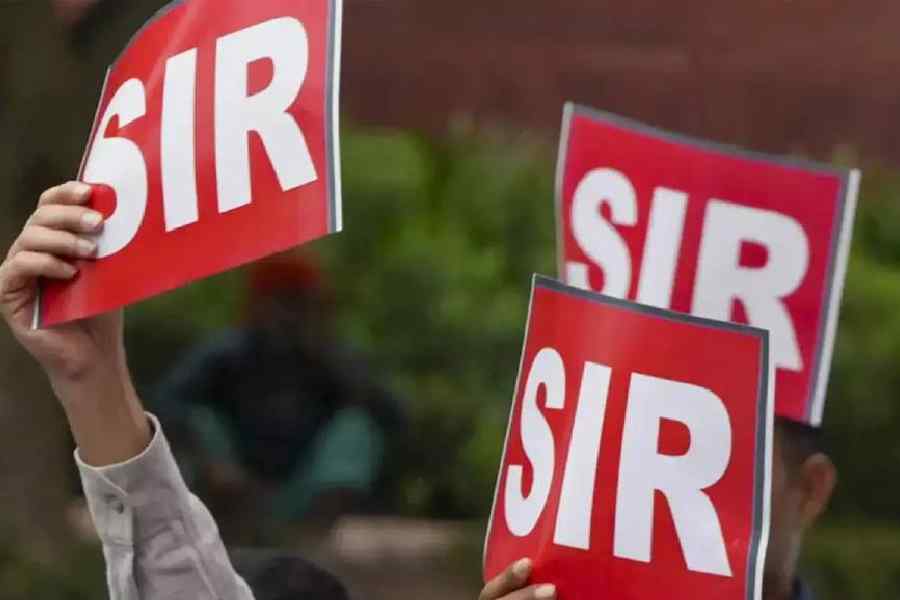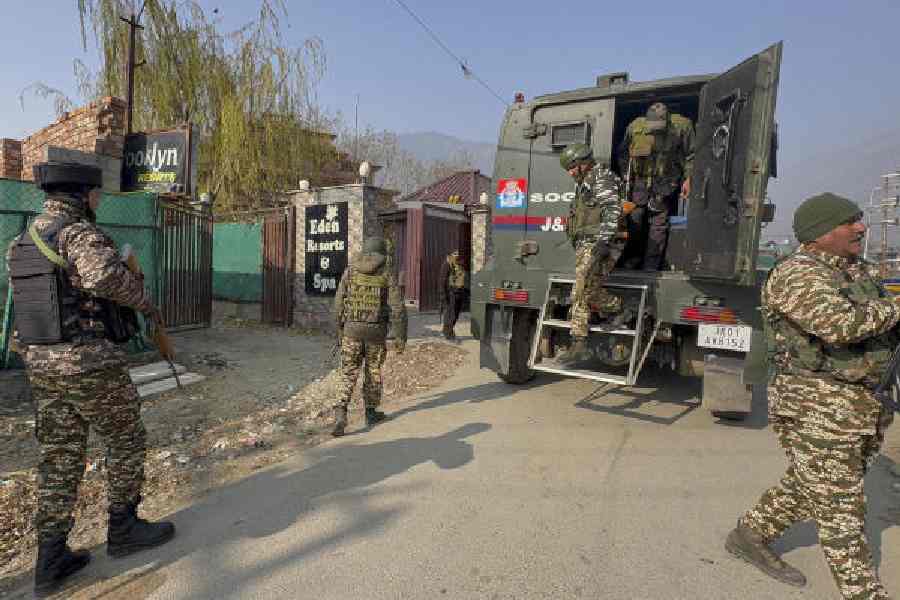 |
| Wrapped in plastic gear, Tharoor braves rain on the campaign trail before door-to-door canvassing ended on Tuesday. Jay Mandal/On Assignment |
Alummoottil Channar was the second person in Travancore, now a part of Kerala, to own a car after the Maharajah almost a century ago. But he was from the backward Ezhava caste and could not find anyone from his caste to be employed to drive the Chevrolet, which is still preserved at his joint family’s site where Channar has a memorial.
So the rich Ezhava from a small village of Muttom in central Travancore, who made his fortunes from liquor contracts, was forced to employ an upper caste Nair as his driver. Naturally in accordance with the customs of that time, Channar could not sit alongside the Nair driver on the front seat if he chose to.
What is worse, Channar had to address his employee respectfully as angunne which translates as something equivalent to “your lordship.” But his driver called his employer eda which is how human beings perceived to be of a lower order were called in Malayalam by Nairs and Brahmins.
When the Chevrolet had to cross a temple, Channar had to get off his vehicle and pass through back alleys to reach his car on the other side since Ezhavas were not allowed to cross temple entrances upfront. But his driver would just ride past the temple door.
Similarly, Channar had to get off his car and stand to attention respectfully each time he came across a European along the road.
I have had a childhood fascination for cars and I still remember the numbers of every model my father owned in succession. Until I moved to Dubai in 1978 and lost it in the packing, I had a sepia-tinted photo of a car similar to Channar’s.
In the early 1900s, my grandfather was a member of the Sri Moolam Praja Sabha, the consultative Assembly constituted by the Travancore Maharajah to which anyone who paid an annual land tax of at least Rs 100 or traders who had a net annual income of at least Rs 6,000 could vote. My grandfather was also the first person to own a car in his small hometown of Cherthala, long after Channar was permitted by the Maharajah to buy his car.
The sepia-tinted photograph was of that car. Therefore, the story of Channar’s automobile had always been a childhood favourite of mine. Revisiting Kerala this week, it is refreshing to see a resurgent interest in the state’s incredibly colourful history and several new books which recount the Channar family’s equally colourful stories.
In the Lok Sabha elections, where people of this state will vote on Thursday, Shashi Tharoor, the Congress candidate in Thiruvananthapuram, finds himself in the same situation that Channar’s Nair driver was placed almost a century ago.
The parallel is apt not only because Tharoor is a Nair in the fray.
Just as the driver had the skills to steer the automobile, Tharoor is qualified to be a member of Parliament. Indeed, of the three main candidates in the fray, including those of the Left Front and the BJP, Tharoor clearly has the best curriculum vitae to represent this cosmopolitan seat. That was why the electorate in Kerala’s capital city reposed their faith in him five years ago.
In the profession of politics where accountability is not a popular virtue, Tharoor has been a model of that virtue. Four years ago, he began releasing an annual report of his activities as Thiruvananthapuram’s representative in the Lok Sabha. But the only people who appear to have noticed this novel annual ritual were his fellow MPs.
In a generationally changing Parliament where younger MPs have proved to be more innovative and responsive, several younger members, even in the Rajya Sabha and in parties other than Tharoor’s, including B.J. Panda of the Biju Janata Dal, followed the Thiruvananthapuram MP’s lead.
When Tharoor did not get much response from his constituents, he began compiling half-yearly reports. Tharoor is disappointed that at media conferences where the annual reports are released, some journalists ask him “silly” questions and write sensational reports. And very little mention of any annual report.
Tharoor has extensively distributed slick brochures replete with photographs, which list his achievements as an MP in the last five years. He has brought out four-page colour pullouts in newspapers as part of his campaign.
But like the Ezhava who owned the car in the Channar story, Tharoor’s challenge this time is a community that virtually owns the Lok Sabha constituency of Thiruvananthapuram. Of the 12.42 lakh voters here, nearly half belong to a single sect.
Nadars constitute 5.45 lakh voters in Thiruvananthapuram, according to a leading representative organisation of this sect, the Vaikunta Swami Dharma Pracharanasabha. They have polarised this election to a point where a candidate’s skills or qualifications do not matter.
On the face of it, the BJP too has done the same. Thiruvananthapuram is a constituency where the BJP has the biggest following in the state. Two elections ago, O. Rajagopal, the party’s candidate, polled 2.28 lakh votes. He did not contest in 2009, but the BJP has fielded him again this time.
Rajagopal, 85, a genial Nair like Tharoor, denies that the BJP is communalising this election. In a long conversation with this correspondent, he delved into the vast memory of his long association with the Sangh parivar to point out that shortly after Syamaprasad Mookerjee founded the Bharatiya Jana Sangh in 1951, he appointed barrister V.K. John as the head of the party in the erstwhile Madras province. Part of the province is now in Kerala.
Ironically, it is the Left Front which hopes to strike gold by communalising this election by pitting a Nadar against the Congress incumbent. Although Bennet Abraham is fighting this election on the CPI’s symbol, he has had little to do with struggles by the Left or their politics. In fact, his claim to fame is that as a medical doctor, he is director of a medical college run, of all groups, by the Church of South India, an antithesis of sorts of the Left movement.
It was former chief minister K. Karunakaran, one of the wiliest political strategists in the Congress and the man who played a critical role in making P.V. Narasimha Rao Prime Minister, who hit upon the idea of cashing in on the Nadar vote bank in 1984.
He fielded his protégé, A. Charles, a member of the state public service commission who had no political ambition, as a Lok Sabha candidate that year. Charles not only defeated the CPI veteran, M.N. Govindan Nair, but he pulled off a hat-trick by winning the seat in three successive elections. No one other than Charles has won from Thiruvananthapuram a second time.
It has been Tharoor’s recurring nightmare in the last two years that his opponents may find a Nadar to challenge him. His party appears to have paid little heed to this nightmare. Against such a vote bank, Tharoor’s claims of having made this city a small diplomatic outpost, a home to several central government agencies, new roads and port expansion make little headway.
Tharoor won in 2009 because there was no Nadar in the fray. And the electorate was impressed by him. If he retains his seat this time even if by a reduced margin from the nearly 1 lakh majority, it will only be because the Nadars, who can be Hindus or Christians in the same household, have not voted as a single bloc for a Christian Nadar that Abraham is.










